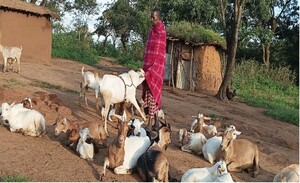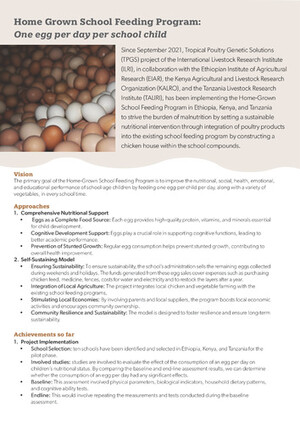
Using phenotypic distribution models to predict livestock performance
Abstract
Livestock production systems of the developing world use indigenous breeds that locally adapted to specific agro-ecologies. Introducing commercial breeds usually results in lower productivity than expected, as a result of unfavourable genotype by environment interaction. It is difficult to predict of how these commercial breeds will perform in different conditions encountered in e.g. sub-Saharan Africa. Here, we present a novel methodology to model performance, by using growth data from different chicken breeds that were tested in Ethiopia. The suitability of these commercial breeds was tested by predicting the response of body weight as a function of the environment across Ethiopia. Phenotype distribution models were built using machine learning algorithms to make predictions of weight in the local environmental conditions based on the productivity for the breed. Based on the predicted body weight, breeds were assigned as being most suitable in a given agro-ecology or region. We identified the most important environmental variables that explained the variation in body weight across agro-ecologies for each of the breeds. Our results highlight the importance of acknowledging the role of environment in predicting productivity in scavenging chicken production systems. The use of phenotype distribution models in livestock breeding is recommended to develop breeds that will better fit in their intended production environment.
Citation
Lozano-Jaramillo, M., Alemu, S.W., Dessie, T., Komen, H. and Bastiaansen, J.W.M. 2019. Using phenotypic distribution models to predict livestock performance. Scientific Reports 9:15371.










